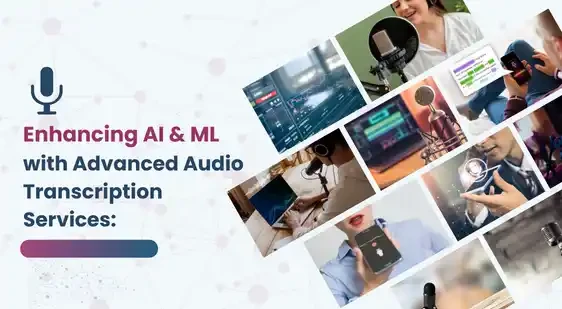In the ever-evolving landscape of artificial intelligence (AI) and machine learning (ML), the significance of high-quality data cannot be overstate. Among the diverse data types used for training and improving these models, audio stands out as both challenging and invaluable. This is where audio transcription services play a pivotal role. This comprehensive guide delves into the world of audio transcription services for AI and ML models, exploring their importance, challenges, techniques, and future prospects.
The Importance of Audio Transcription in AI and ML
AI and ML models thrive on data. The accuracy and efficiency of these models are directly proportional to the quality and quantity of the data fed into them. Audio data, which includes spoken words, environmental sounds, and other auditory elements, is a rich source of information. However, AI and ML models often require this data in a textual format to process and learn from it effectively. This is where audio transcription services become crucial. By converting audio into text, these services provide a format that AI and ML algorithms can easily interpret and analyze.
Challenges in Audio Transcription for AI and ML
- Accuracy: One of the primary challenges in audio transcription is maintaining high accuracy. This includes correctly transcribing speech, understanding different accents, and dealing with background noise.
- Speed: AI and ML projects often require quick processing of large volumes of audio data. The speed of transcription without compromising accuracy is a significant challenge.
- Complexity: Audio data can vary greatly in terms of complexity. This includes differences in vocabulary, dialects, and the presence of multiple speakers.
Techniques in Audio Transcription
Audio transcription services utilize a blend of techniques to overcome these challenges:
- Automatic Speech Recognition (ASR): ASR systems are AI-driven solutions that automatically convert spoken words into text. Advanced ASR systems are trained on vast datasets to improve their accuracy and adaptability to different languages and accents.
- Natural Language Processing (NLP): NLP helps in understanding context and semantics in speech, making transcription more accurate and meaningful.
Applications in AI and ML
The applications of audio transcription in AI and ML are vast and varied:
- Voice Assistants and Chatbots: Accurate transcriptions enable these applications to understand and respond to human speech more effectively.
- Sentiment Analysis: Transcribed audio data is used in sentiment analysis to gauge customer opinions and emotions.
- Healthcare: In healthcare, transcribing patient interactions and consultations helps in record-keeping and data analysis for improved care.
- Legal and Educational Fields: Transcription services assist in creating accessible records of legal proceedings and educational materials.
Quality Assurance in Transcription
Ensuring high quality in transcription involves several steps:
- Continuous Training of ASR Systems: Regularly updating the training datasets for ASR systems ensures they stay accurate and relevant.
- Quality Checks by Experts: Having human experts review transcriptions adds an essential layer of quality assurance.
- Feedback Loops: Implementing feedback loops where inaccuracies can be corrected and learned from is crucial for continuous improvement.
Future of Audio Transcription in AI and ML
The future of audio transcription services in AI and ML looks promising with advancements in technology:
- Real-Time Transcription: The development of faster, more efficient algorithms is leading to real-time transcription capabilities.
- Personalization: Future transcription services may offer personalized models that can adapt to specific user needs and preferences.
- Integration with Other AI Technologies: Combining transcription services with other AI technologies like predictive analytics and machine translation opens new possibilities.
Conclusion
They bridge the gap between complex audio data and the structured input needed for these advanced technologies. As we continue to witness rapid advancements in AI and ML, the role of sophisticated audio transcription services becomes increasingly vital. These services, equipped with the latest technological advancements and an understanding of the challenges ahead, are set to revolutionize how machines understand and interact with the human world.







